Eddy Current NDT
Eddy Current Bolt Hole Inspection Using Smart Filter Adjustment
Published on 17th May 2023
.png)
Aircraft are composed of numerous pieces of aluminum attached together using thousands of fasteners. Many of these fastener holes must be carefully inspected to help ensure there are no cracks. Eddy current (EC) rotary scanner technology is commonly used in the aerospace industry for this type of crack detection.
Many of the eddy current flaw detectors used today require a certain amount of filter adjustment to attain a clear signal. Operators may not fully understand the importance of filters for scanner operation and the adjustment required during operations.
Filter adjustment is often overlooked during bolt inspections. It can take a lot of trial and error to obtain the proper high-pass and low-pass filter settings. Further, if the scan speed changes, these filter settings may not result in the optimal signal and introduce unwanted noise. An operator’s skill level, as well as the differences between the instruments used during inspection, can greatly vary the results.
Perform Easy and Consistent Rotary Bolt Hole Inspections
The NORTEC™ 600 eddy current flaw detector offers a solution to the time issues and consistency problems commonly experienced with fastener and bolt hole inspection. The advanced features of this EC flaw detector make it easy to use and help with filter adjustment.
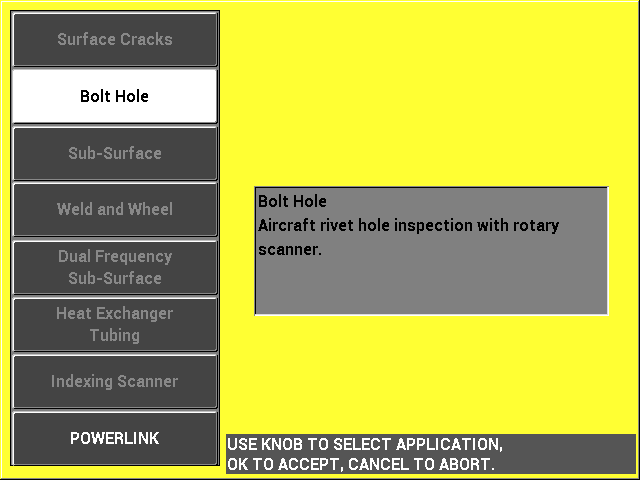
The application selection menu of the NORTEC 600 flaw detector loads predefined customer-recommended and carefully considered factory settings for each application.
The Bolt Hole application preset eliminates the need for manual filter adjustment.
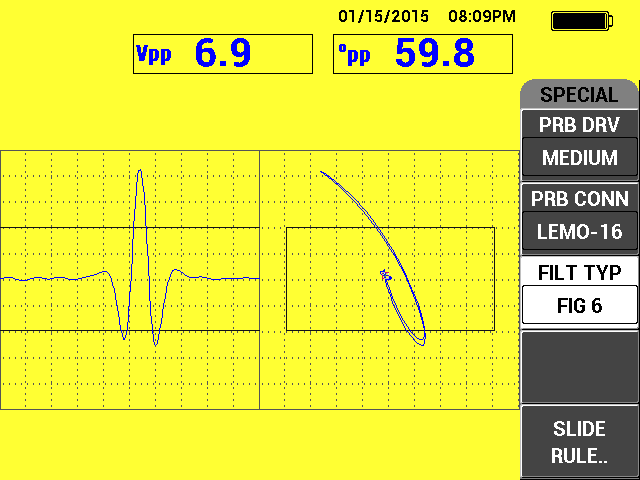
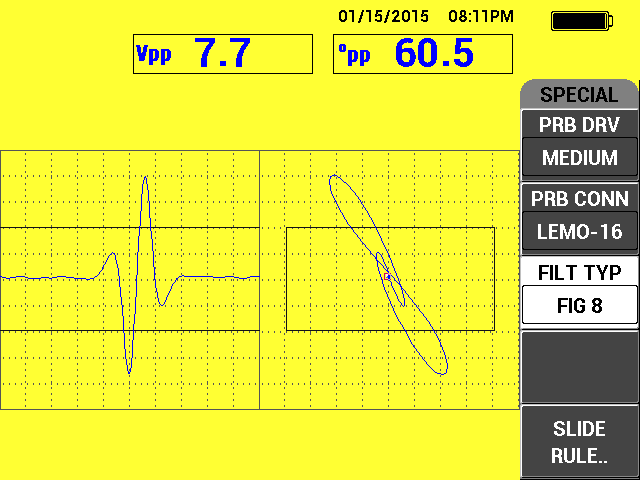
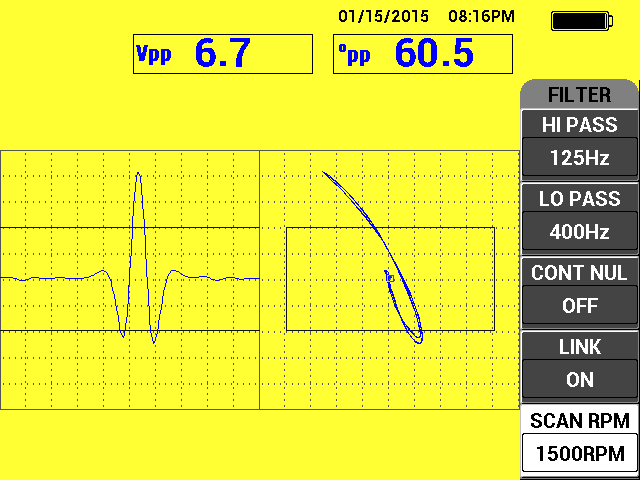
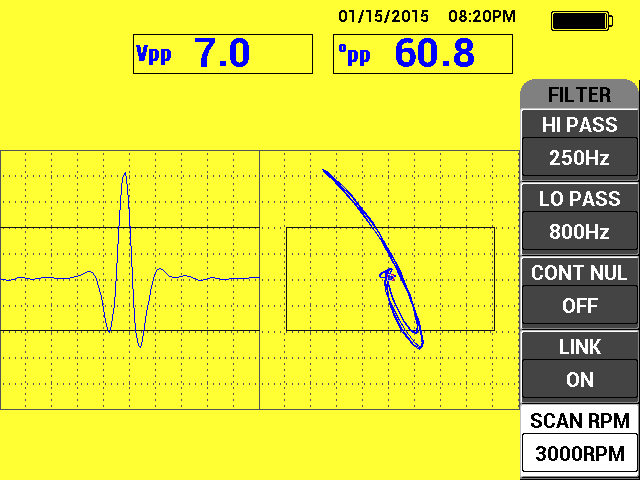
These (l to r) screen captures illustrate how, when the RPM speed changes, the LINK function automatically adjusts the HI PASS and LO PASS filters without any significant signal change.
Key Benefits
- Application-specific menu of preset parameters shortens setup time
- Preset filters eliminate the need for manual filter adjustment
- Consistent results, regardless of the operator performing the inspection
- LINK function adjusts filter settings when the scan speed changes
- Figure 6 and figure 8 signal shapes satisfy aircraft manufacturer requirements








